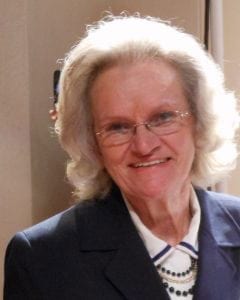Due to a rare disease affecting many parts of her body, my oldest daughter, Kelley, saw a number of different doctors in a number of different locations.
I clearly remember the day I noticed that I had more phone numbers for doctors than for friends in my address book, but it wasn’t until the remark, “I never knew just how complicated her life was,” from one of her doctors, after he read my first book, Kelley’s Journey: Facing a Rare Disease with Courage, that I realized that almost every doctor she visited saw only one aspect of her condition.
During Kelley’s lifetime, we met countless physicians, nurses, therapists, and other healthcare professionals in a variety of facilities. I learned to write appointments on the calendar in pencil. Everything was always subject to change. Kelley’s primary physician took care of average medical issues and made referrals, bringing about the need to coordinate appointments with various doctors at various facilities. Some of those doctors saw her periodically, and some for only a short time, to treat her in the emergency department, perform an operation or do some special testing. Due to their specialties, it wouldn’t be possible for them to learn everything about every patient.
For example, an excellent orthopedic surgeon at one hospital in a large city was extremely helpful in keeping Kelley mobile. However, her severe breathing problems, due to a narrow airway, caused problems that couldn’t be addressed adequately at that hospital. Consequently, she had major surgery to try to correct the problem at another hospital in the same city.
The results were not what we hoped for, but that surgeon did find a solution that could keep her airway open by placing a special plastic tube in her trachea. It had an arm protruding at the front of her neck with a little cap on it which could be removed for suctioning if necessary. That worked well, although it was necessary to go back to that hospital annually to have it changed. However, it didn’t work so well when she had a new orthopedic procedure at the other hospital, and her special tube was torn when they attempted to remove the the breathing tube after surgery.
Even though the surgeon came out to the waiting room to tell me all had gone well, I became concerned when no one else came to get me for a very long time.
Finally one of the other doctors came out to tell me that she was fine, “but.”
Oh, that word always sent chills up my spine! The word “but” under these circumstances might as well have been curse words!
That large city hospital didn’t have any replacements for the special tube she needed to keep her airway open. They actually had to send a runner across town (through city traffic) to the other hospital to obtain one for her! The anesthesiologist told me later that he would be sure to have those on hand for her subsequent operations there.
This is only a glimpse of the complications of a rare disease life.
Some of Kelley’s other complications included being evaluated for a problem at a local hospital, where they determined she needed a medical center. Thus, she had a number of ambulance rides and even a med-flight.
And I just read a typical post on-line by the mother of two boys with a rare condition that went something like this, “On the phone with the oral surgeon, the pediatrician, the pharmacy, the neurologist, and the wheelchair company. Did I forget anyone?”
Tomorrow I’ll read a similar post by another parent.
 About the Author: Denise Crompton and her husband Bob, raised four children, the oldest of whom, Kelley, had the rare disease of Mucolipidosis 3. The many years that they spent caring for Kelley prompted Denise to write two books. Kelley’s Journey: Facing a Rare Disease with Courage chronicles their own daughter’s experiences. Diagnosis: Rare Disease includes some of the experiences of 12 more families, and was written to help raise awareness of all that is involved in living with rare conditions. All of Denise’s royalties go toward rare disease research. The Cromptons live in New Hampshire, where they spend their retirement years enjoying their many grandchildren, while still reaching out to help families with rare diseases.
About the Author: Denise Crompton and her husband Bob, raised four children, the oldest of whom, Kelley, had the rare disease of Mucolipidosis 3. The many years that they spent caring for Kelley prompted Denise to write two books. Kelley’s Journey: Facing a Rare Disease with Courage chronicles their own daughter’s experiences. Diagnosis: Rare Disease includes some of the experiences of 12 more families, and was written to help raise awareness of all that is involved in living with rare conditions. All of Denise’s royalties go toward rare disease research. The Cromptons live in New Hampshire, where they spend their retirement years enjoying their many grandchildren, while still reaching out to help families with rare diseases.
Share this rare disease story and let us know your rare disease experience today.


